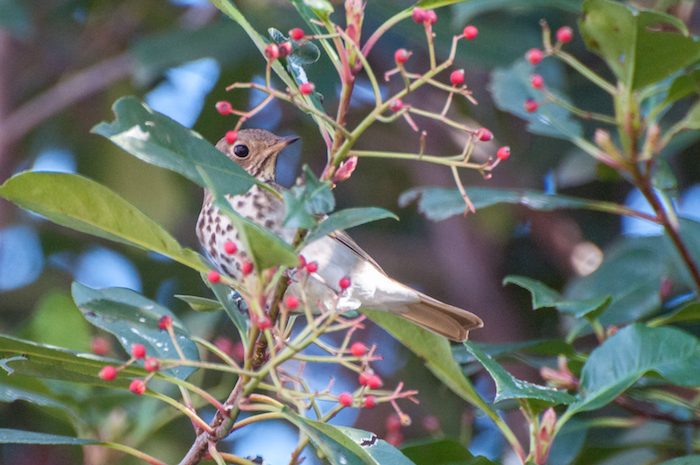
Hermit Thrush
For birds, yard after yard after yard adds up to a lot of potential homes. Backyard sanctuaries are pleasant for people, too, and fairly easy to provide. Just consider the basic elements of habitat: food, water, and shelter.
Providing food does not require filling feeders. Feeders can be fun because they draw birds for easy viewing, but they also require periodic cleaning to minimize spreading disease—say, once a month with a nine to one water to bleach solution. Hummingbird feeders require cleaning and refreshing every 2-3 days in the summer.
Plants will feed birds with less fuss. Berries and seeds on shrubs, grasses, and trees are all natural food supplies. Flowers, especially tubular ones like fuchsia and penstemon, offer nectar to hummingbirds. Benign neglect of gardens leaves old seedheads for winter consumption and unraked leaves for scratching through for the food they hold. Even without bird-edible fruits and seeds, plants feed insects, which become the main source of protein for songbirds around the world. Native plants are usually best, as they have evolved with the birds and insects of the area and usually support them most effectively.
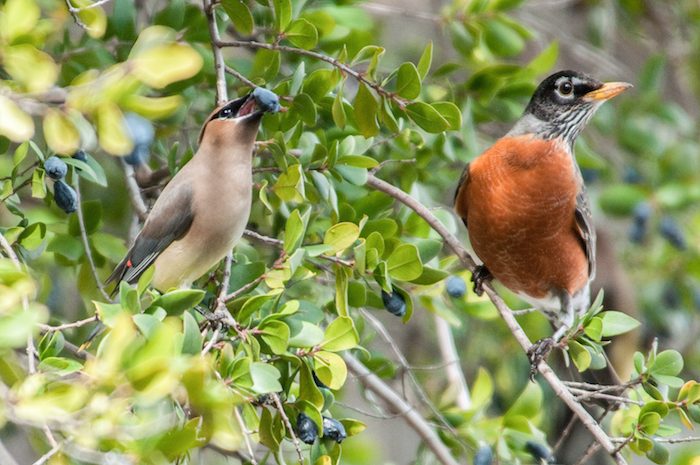
Cedar Waxwing and American Robin
Of course, avoid pesticides and herbicides. At worst they poison the birds, and at best they kill off the birds’ food source.
Plants also offer shelter. Some birds roost high in trees, others in shrubs, still others on the ground under brush. If décor and fire safety call for pruning up, consider retaining some low shrubbery for sparrows or quail. Woodpeckers carve numerous holes in dead wood, creating homes used by many bird species. You may choose not to leave whole snags standing, but just a standing trunk can invite excavations that bluebirds, wrens, flycatchers, titmice, nuthatches, and swallows will readily use.
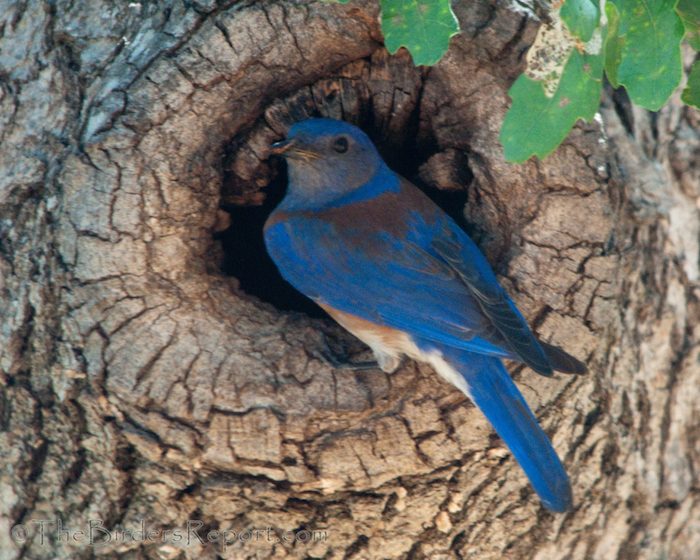
Western Bluebird Male
Those familiar cavity-nesters will also use home-made nesting boxes. To find bird-house directions, at wintuaudubon.org see Places to bird/Attracting birds. In our area, it’s best to mount your birdhouses in shaded areas.
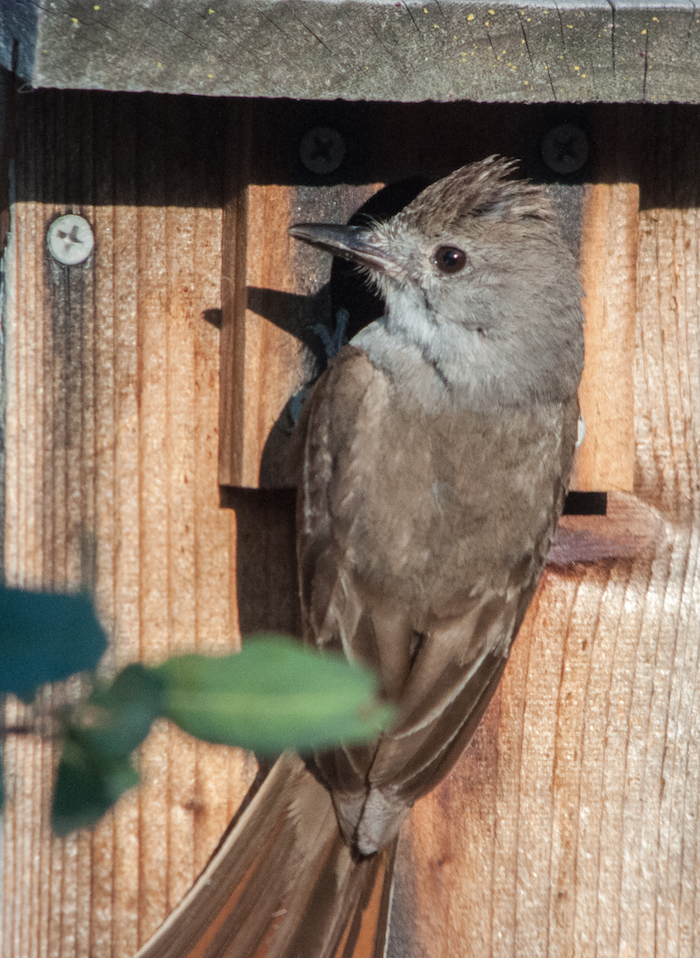
Ash-Throated Flycatcher
Of course, ensure that your yard is as feline-free as possible. Outdoor cats kill 15-20% of North American birds every year, including nearly 50% of suburban fledglings.
Water remains the elixir of life. A shallow pan, refreshed every day, makes an easy start. A trickle of running water invites many more visits. Small pumps are inexpensive and can run a home-made fountain if electricity is safely available. For permanent pools, mosquito-fish are available from Shasta County at (530) 365-3768.
Consider commercial fountains carefully. Songbirds prefer shallow puddles; a sloping edge will accommodate birds of different sizes for both drinking and bathing. Steep edges inhibit use.
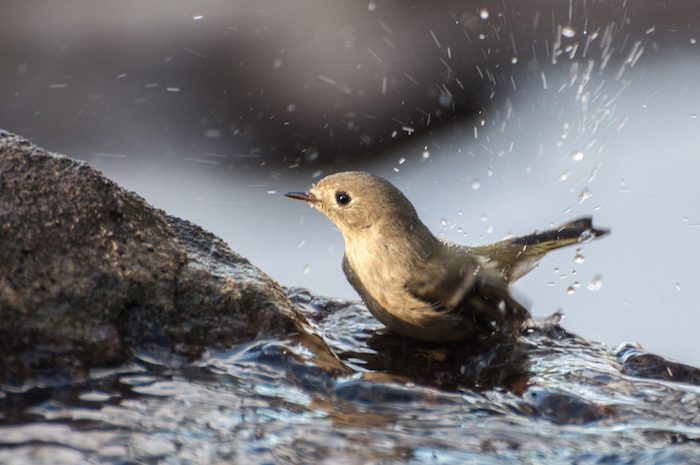
Ruby-crowned Kinglet
Birds have lost vast swathes of former habitat. The wildfires are hardly the worst of it. If we can curb the super-sizing of them, fires are natural, and the cycle of light burn and fresh regrowth benefits many species. The more devastating disruption is the permanent and widespread habitat conversion of historical oak woodlands, wildflower fields, and riparian meanders into row crops, monoculture orchards and tree farms, pavement, and buildings. Now climate change is expected to further eliminate half the seasonal range of 314 North American bird species. It’s a tough time to be dependent on an ecosystem.
We can shape our yards to offer the food, water, and shelter that will help many birds still find homes.

No comments yet.